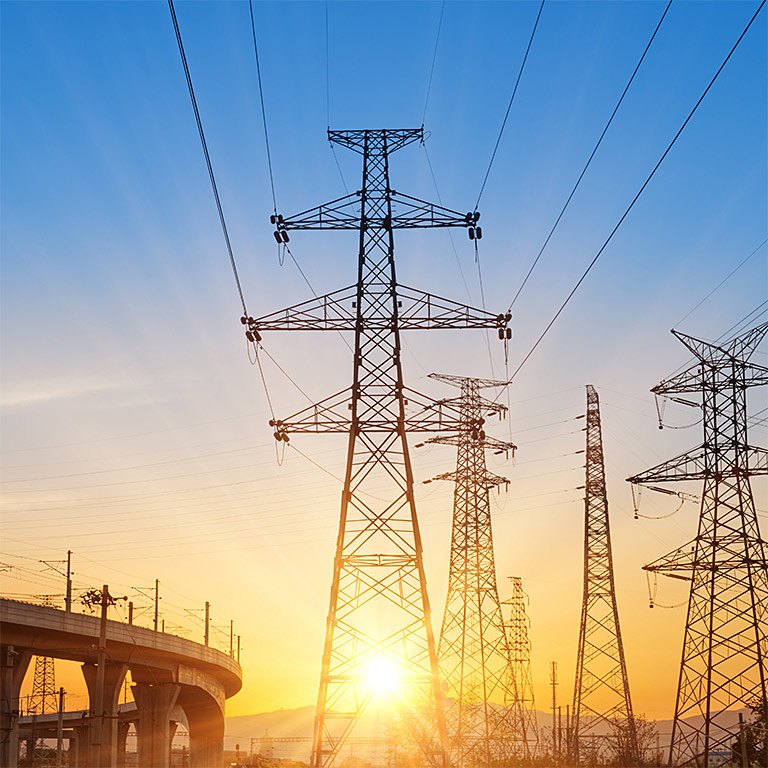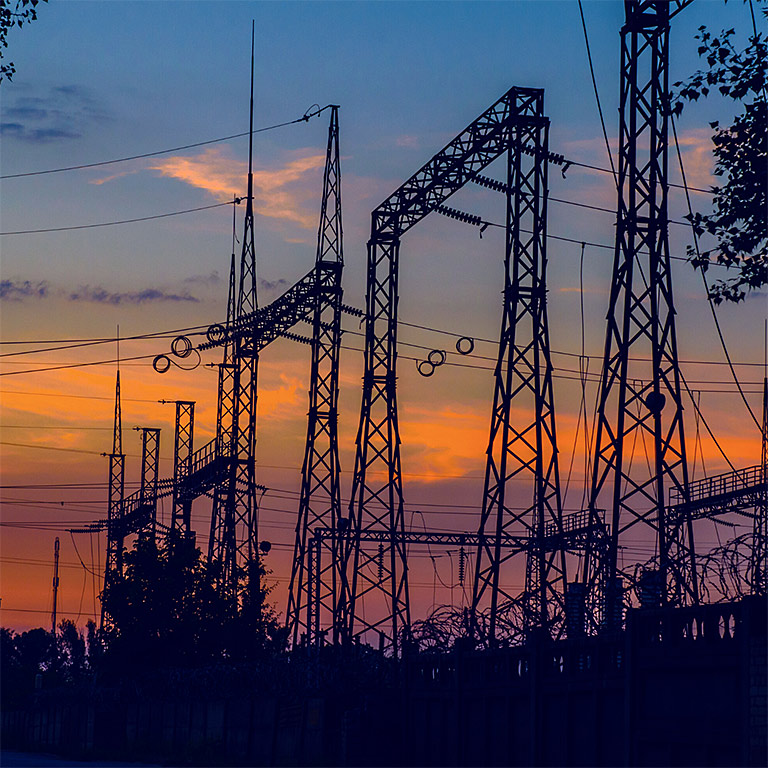Numerous readily available grid safety solutions exist. These viable innovations must be rapidly instituted to protect our grid against known threats and hazards. As the demand for grid protection expands, brilliant minds will undoubtedly develop even more innovative ideas to secure our grid, and protect our power. Promising fortification concepts have been developed by wise executives and utility engineers who understand that strict guidelines and protection measures may (hopefully) become required by law. Consistent citizen pressure must continue to pass legislation requiring utility companies to implement existing protective protocols while encouraging them to forge further state-of-the-art safeguards. Our goal at ‘GDPU’ is to ensure the grid never goes down! We’ve taken the time to list examples of immediate/interim solutions and sensible steps to secure our existing grids while we push for developing reliable, resilient microgrids.
WHAT ARE POTENTIAL SOLUTIONS TO FIX OUR GRID?
Many solutions exist NOW to protect the grid against known threats and hazards, and new innovative solutions will be developed as the demand for grid protection grows. Some of the most promising innovations for grid protection have come about because executives and utility engineers saw that they might one day be required by law to protect their systems. This means there must be consistent pressure by the people to require that utilities seek existing solutions and develop new ones to ensure that the grid never goes down. Below are just a few examples of solutions and steps that can be taken now to secure the existing grid and begin building new, more resilient microgrids.

Prioritize Nuclear Plants and Spent Nuclear Fuel
Nuclear plants have long been hailed as one of the safest, most effective methods of generating high volumes of clean, carbon-free electricity. However, the nuclear industry lacks the ability to handle prolonged regional or nationwide outages, especially while safeguarding hazardous spent nuclear fuel. The government and industry sector have been made aware and warned of these vulnerabilities for over a decade without making the necessary changes to safeguard this crucial facet of our power supply.

Protect Critical Substations
We must rapidly evaluate the most critical substations that house transformers with the most complex replacement scenarios (more specifically, substations that support offsite power to nuclear plants and major water/wastewater systems). The assessment should identify critical supply chain vulnerabilities (such as transformers or components that have been manufactured or imported from China) while implementing specific applications to protect against internal or external sabotage. Next, we must execute existing protective measures (featured below) to properly defend against EMP/GMD threats and cybersecurity breaches.

Implement Existing EMP/GMD Protection Systems
In 2007, the EMP Commission issued a report urging the government to immediately implement solutions to protect our precious power grid. A powerful partnership sparked when CenterPoint Energy teamed up with Siemens. Together, they developed standard measures and procedures to mitigate possible disruptions from EMPs. Their partnership created a “substation protection system,” which is still available for purchase today! SEMPRE even designed an EMP-hardened 5G communications system that can be used for communication between utility companies with failures; or UCs needing aid for grid restoration. These are only a few examples on the growing list of protective and preventative products that are currently AND readily available for implementation. These, among others, must be immediately incorporated into the critical nodes of our power grid.

Upgrade Federal and State CyberSecurity Standards
Unfortunately, the federal government’s current cybersecurity standards designed by “the industry” and “approved” are dangerously insufficient. Their security standards lean towards gross negligence and apply only to the “bulk power system.” The current cybersecurity standards clearly state: companies are NOT required to seek detection, mitigation, or even removal of malware (like the virus Russia employed to terminate electricity in Ukraine and then implanted in our systems). Even more shocking: these standards do not protect against catastrophic cyber-physical threats such as “Aurora” and don’t apply to imperative systems that allow grid operators to control the flow of electricity. Federal regulators have long been warned about these severe deficiencies. Still, they refuse to fix the problem by claiming they’re “beholden” to the electric utility lobby (not of the citizens of this nation). We must continue to push and encourage the federal government, state legislators, and public service commissioners to mandate upgraded cybersecurity standards to protect our power grid.

Upgrade and Deploy All-Hazards Protected Communication Systems at Fed and State Level
Recently, violent and destructive tropical Caribbean storms have highlighted the dangers and dire effects of losing emergency communication systems. Any disruption in this critical system becomes a significant obstacle in providing relief to the general public by delaying life-saving disaster response team deployments. Similar issues could become life-threatening in a national defense response situation against an adversary. A protected communication system is absolutely critical in the reconstitution of vital public services and “black starting” any local or regional power grid. We must urgently leverage and incorporate similarly robust standards across both public and private communication sectors.

Leverage Military Standards
The U.S. Department of Defense (DOD) has secured EMP protection as a standard for its critical systems. The technology is ready and available for use, so we must urge the public and private sectors to incorporate these same practices and standards to expand our protection beyond substations. These measures must be carried into the generation and distribution channels of the grid, including water/wastewater management systems.

Establish Microgrids
To remedy dependence and the catastrophic damage that would ensue in the vast loss of power, we must design and construct local all-hazards resilient microgrids to be established nationwide. More specifically, we must build microgrid systems to protect spent nuclear fuel storage sites and municipal water systems so their power is never interrupted, no matter the circumstance.
The Electromagnetic Defense Task Force created a report in 2018 that lists recommendations for our protection. Ask yourself, if the government believed a task force of this nature should be created…why are they not implementing the experts’ advice?
There exist six critical recommendations created by the EMP commission in a report published in 2017, but they still need to be implemented. We must contact government officials to ensure they carry out these procedures and heed the word of the experts in this field.

A NEW PRESIDENTIAL EXECUTIVE ORDER MUST BE ISSUED

Federal Legislation Must Be Passed
To mandate entities involved in the critical electric
infrastructure take reasonable and prudent action to
address: cybersecurity, physical security, protection from
EMP/GMD, and hardening for severe weather events. This
legislation should be similar to the SARBANES-OXLEY ACT OF
2002 which holds key utility executives ACCOUNTABLE for
reasonable and prudent grid protection with the penalty of
criminal prosecution for non-compliance.






